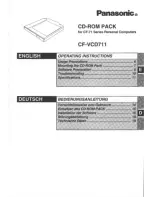
2.7.13 Variable Air Volume
VAV or Variable Air Volume systems, are used to control both the ventilation and temperature to satisfy the requirements of
a building. Central VAV systems are considered to be the most energy efficient method to air condition buildings. By
designing central systems instead of distributed systems, a greater efficiency can be obtained.
The efficiency comes from utilizing larger fans and larger chillers which have much higher efficiencies than small motors
and distributed air-cooled chillers. Savings are also a result of decreased maintenance requirements.
2.7.14 The VLT Solution
While dampers and IGVs work to maintain a constant pressure in the ductwork, a Adjustable frequency drive solution saves
much more energy and reduces the complexity of the installation. Instead of creating an artificial pressure drop or causing a
decrease in fan efficiency, the Adjustable frequency drive decreases the speed of the fan to provide the flow and pressure
required by the system.
Centrifugal devices such as fans behave according to the centrifugal laws. This means the fans decrease the pressure and
flow they produce as their speed is reduced. Their power consumption is thereby significantly reduced.
The return fan is frequently controlled to maintain a fixed difference in airflow between the supply and return. The
advanced PID controller of the HVAC Adjustable frequency drive can be used to eliminate the need for additional
controllers.
Frequency
converter
Frequency
converter
D1
D2
D3
Cooling coil
Heating coil
Filter
Pressure
signal
Supply fan
VAV boxes
Flow
Flow
Pressure
transmitter
Return fan
3
3
T
130BB455.10
Figure 2.15
Introduction to VLT® HVAC D...
VLT
®
HVAC Drive Design Guide
MG11BB22 - VLT
®
is a registered Danfoss trademark
2-15
2
2
















































